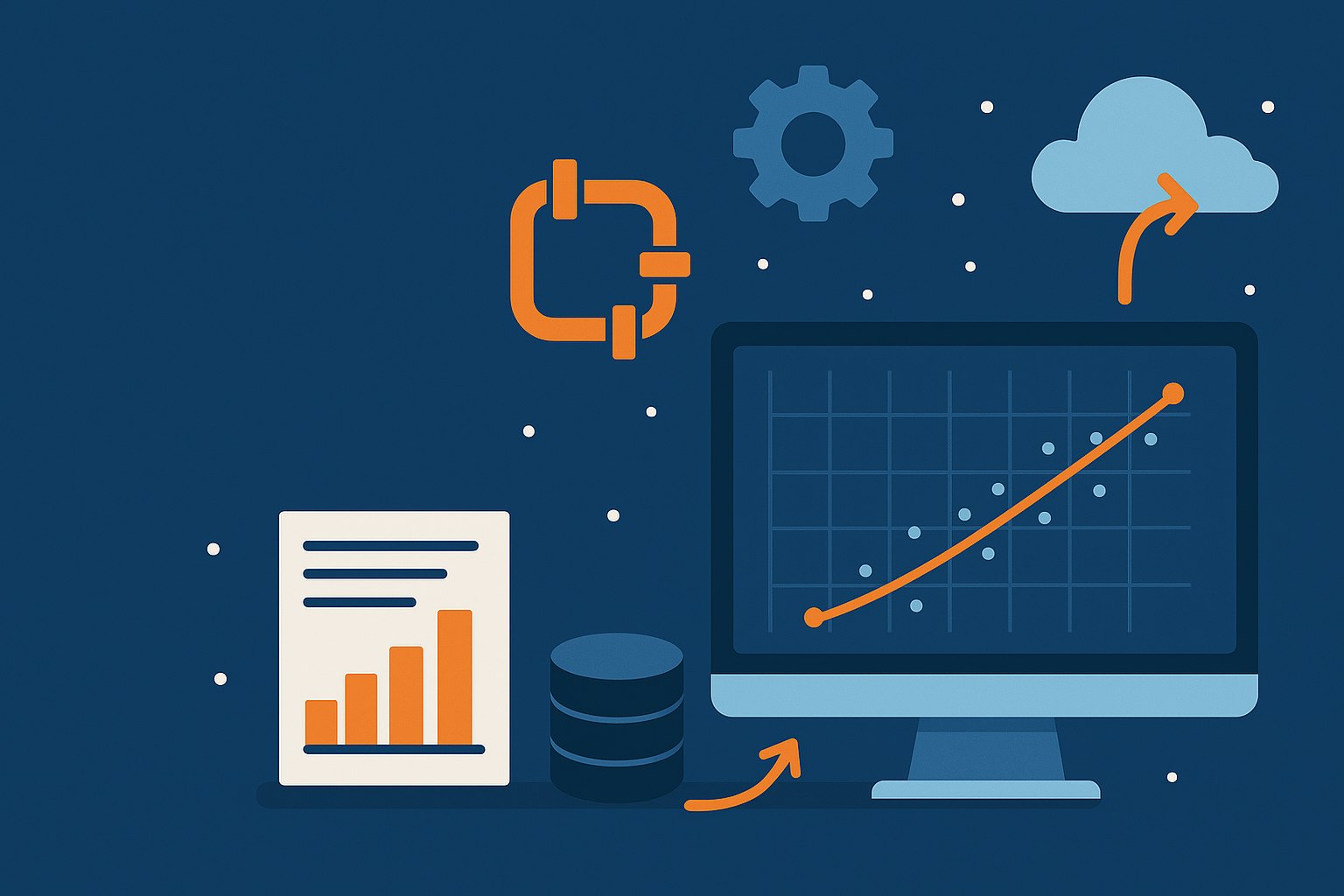Table of Content
Predictive modeling has become a cornerstone of modern analytics, powering applications across finance, healthcare, manufacturing, and beyond. Regression-based predictions, often involving the estimation of continuous numerical values, are particularly prevalent.
Whether predicting stock prices, estimating energy consumption, or forecasting equipment maintenance requirements, a well-designed MLOps pipeline is essential to ensure reliability, scalability, and automation.
Understanding Regression-Based Pipelines
Regression-based prediction involves forecasting or estimating a continuous numeric value based on a set of input features. This could range from predicting financial metrics, product demand, power usage, to various other quantitative measures.
An effective MLOps pipeline for regression-based prediction should comprehensively address the following stages:
- Data Ingestion and Transformation
- Feature Engineering and Selection
- Model Training, Validation, and Evaluation
- Model Deployment and Versioning
- Automation, CI/CD Integration, and Monitoring
- Visualization, Reporting, and Business Intelligence
- Continuous Optimization and Improvement
This guide explores each of these stages in detail, emphasizing tools, processes, and best practices.
4 Stages to Build a Robust MLOps Pipeline for Regression Based Predictions
1. Data Ingestion and Transformation
Handling raw data is often the most challenging part of building regression-based models. It involves several steps:
Data Acquisition
Collecting data from multiple sources, such as databases, IoT devices, or APIs, and storing it in scalable storage solutions like Amazon S3, Google Cloud Storage, or Azure Blob Storage. Leveraging tools like AWS Glue, Apache Nifi, or Airflow for orchestrating ingestion workflows is crucial for maintaining data consistency.
Data Transformation
Leveraging services like AWS Glue DataBrew, Apache Spark, or Pandas for tasks including data cleaning, normalization, scaling, encoding, and type conversion. Implementing preprocessing pipelines ensures improved model performance through robust data handling.
Data Cataloging
Using tools such as AWS Glue Catalog or Apache Hive Metastore to maintain metadata and provide discoverability of datasets. Cataloging ensures consistency across training, testing, and deployment stages.
Batch and Stream Processing
Implementing frameworks like Apache Kafka, Apache Flink, or AWS Kinesis for real-time data processing where needed. Handling large-scale batch data with frameworks like Spark or Dask can enhance efficiency.
Data Validation
Integrating systems like TensorFlow Data Validation (TFDV) or Great Expectations to validate schema, detect anomalies, and ensure data integrity before feeding it into the model training pipeline.
2. Feature Engineering and Model Training
Feature Engineering
Creating meaningful features from raw data is critical for regression-based prediction. Key techniques include:
- Scaling and Normalization: Applying techniques like Min-Max Scaling or Standardization to bring all features within a consistent range, improving model convergence during training.
- Encoding Categorical Variables: Using One-Hot Encoding, Label Encoding, or Embedding Layers (for deep learning) depending on the model architecture. Frameworks like Scikit-Learn and TensorFlow/Keras provide robust utilities for this process.
- Dimensionality Reduction: Techniques such as Principal Component Analysis (PCA), Autoencoders, or Feature Selection through SHAP values can enhance model performance by removing noise and redundant features.
- Time-Series Feature Engineering: For regression involving time-based data, generating lag features, rolling statistics, Fourier transforms, and seasonal decomposition are essential for improved prediction accuracy.
3. Model Validation and Evaluation
Building robust predictive models involves selecting appropriate algorithms and rigorously evaluating them using various metrics. Common algorithms include:
- Linear Regression, Ridge, and Lasso Regression
- Decision Tree Regressor, Random Forest Regressor, XGBoost, LightGBM
- Support Vector Regressor (SVR)
- Deep Learning Architectures (e.g., LSTM, GRU, Transformers) for sequential data
- Ensemble Learning Methods: Stacking, Bagging, Boosting to enhance performance.
Model performance metrics include:
- Mean Squared Error (MSE), Root Mean Squared Error (RMSE), Mean Absolute Error (MAE)
- R² Score and Adjusted R² Score for measuring explained variance
- Cross-Validation: Using techniques like k-fold Cross-Validation for robust evaluation.
Experiment tracking tools like MLflow, Weights & Biases, or Amazon SageMaker Experiments provide robust experiment logging and comparison capabilities.
4. Model Deployment, Versioning, and Infrastructure Best Practices
Managing the lifecycle of regression models requires robust version control and deployment practices. This includes:
Model Registry
Tools like Amazon SageMaker Model Registry, MLflow, or DVC to keep track of different model versions, their performance metrics, and associated metadata.
Deployment Mechanisms
Automating deployment through CI/CD tools such as AWS CodePipeline, Jenkins, or GitHub Actions to ensure smooth and consistent rollouts.
Cloud-Native Solutions
Leveraging AWS services like Lambda, Fargate, SageMaker Endpoints, and EKS for scalability, monitoring, and fault-tolerance. These services provide automated scaling, rolling updates, and seamless integration with logging tools.
Security and Compliance
Implementing Identity and Access Management (IAM), data encryption (KMS, SSL/TLS), and automated compliance checks to ensure robust security.
Benchmarking & Use Cases
Common Use Cases
- Financial Forecasting: Predicting stock prices, portfolio performance, or credit risk.
- Energy Consumption Prediction: Estimating future energy usage based on historical data.
- Supply Chain Optimization: Predicting demand for better inventory management.
Benchmarking
- Using libraries like Scikit-Learn and TensorFlow to compare model performance.
- Recording performance metrics across algorithms (e.g., MSE, RMSE, R²) to determine the best-performing model.
- Tracking model performance over time to identify degradation or improvements.
Conclusion
Building an MLOps pipeline for regression-based prediction involves tackling multiple technical challenges. By leveraging best practices for data ingestion, preprocessing, model training, deployment, monitoring, and cloud-native infrastructure, organizations can create scalable, accurate, and robust prediction systems.
Ready to streamline your machine learning workflows?
At Intuz, we specialize in end-to-end MLOps services tailored to your business needs. From automating data pipelines to deploying and monitoring models in production, our team ensures your AI initiatives deliver real value — faster and more reliably.
Let's Book 45 Minutes Free Consultation With Our AI Experts to discuss how we can build scalable, production-ready ML solutions with confidence for your business.




